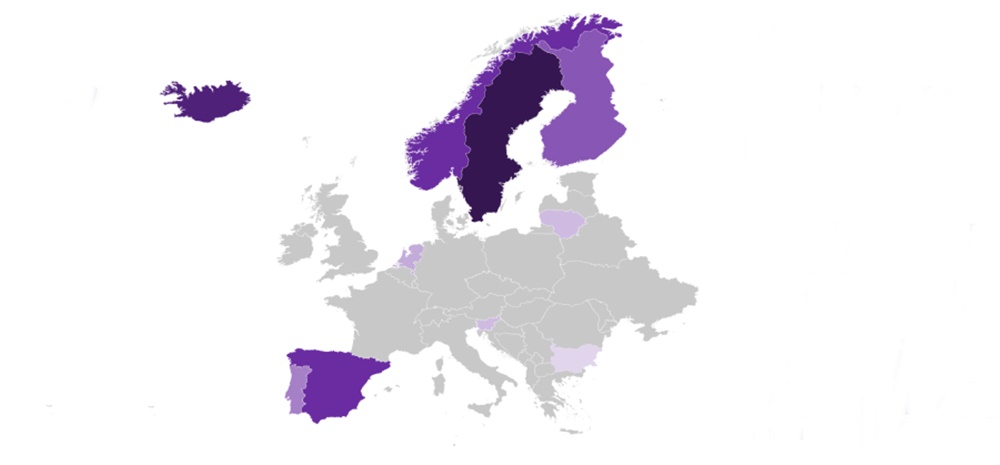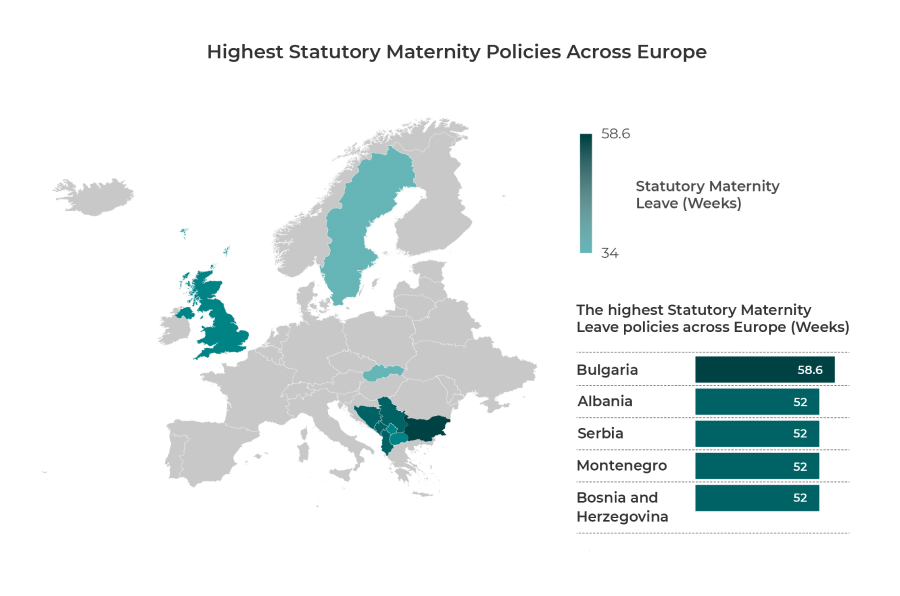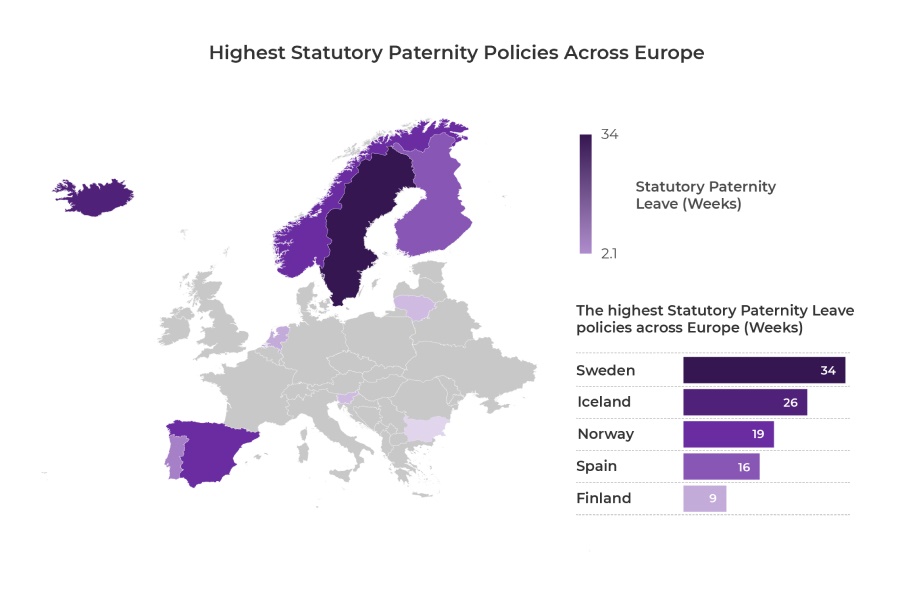Throughout the pandemic many workplaces have offered their employees more flexibility.
Flexible working options such as adjusting hours, days, or place of work, are attractive to many employees, and can offer your team more control over how, where and when you and your teams work. New research by Bupa found that 27% of working parents want to see more flexibility at work, too.
One area that’s surged in popularity over recent months is ‘shared parental leave’. This is where both parents can take time off in a more flexible way during your baby’s first year. Our new research has revealed a 33% increase in Google UK searches for ‘shared parental leave’ over the past year, too.
Bupa’s experts have analysed every country in Europe to find out who offers the most statutory maternity and paternity leave for new parents (the number of days new mums and dads can take off work whilst still being paid from their employer when a child is born).
Nordic countries are shaping the future of shared parental leave
Our research has shown that Nordic countries are paving the way for more flexible parental leave, allowing parents to share their time-off.
New parents in Sweden are entitled to 480 days leave after their child is born, compared with 50 weeks (380 days) in the UK.
Which European countries offer the most maternity leave?
An analysis into every European maternity policy found that Bulgaria offer the highest paid time away from work (58.6 weeks). This is closely followed by a wealth of countries offering 52 weeks of statutory paid leave, including Albania, Denmark, and Serbia.
Whilst the UK currently offers new mums 52 weeks off, only 39 weeks must be paid by your employer. This ranks the UK in 6th place, tied with Kosovo and North Macedonia.
Which European countries offer the most paternity leave?
Paternity leave varies widely across Europe, but in general fathers are entitled to fewer days off work compared to new mothers. The average paid paternity leave is just 3.4 weeks, compared to 23.1 weeks for statutory maternity leave.
Nordic countries (Sweden, Norway, Finland, and Iceland) offer generous paternity leave policies, with Sweden offering the highest statutory paternity leave at 34 weeks.
With more parents searching for flexible working options in the workplace, Pablo Vandenabeele, Clinical Director of Mental Health at Bupa UK, has shared how to make shared parental leave (SPL) work as an employer.
“Creating more options for new parents gives them greater choice in how to balance their own work and home life. Similarly, allowing parents more choice and flexibility to combine work with childcare responsibilities means that as an employer, you’ll be able to better recruit and retain talent”.
-
Make your team aware of all their options
It’s important to communicate all the parental leave options available to your team that are offered by your busines. This will help your team to make informed decisions that work both for their families and careers.
If you’re unable to advise your team members on SPL in your workplace, put them in touch with a department that can. If you don’t currently have the sources available to offer advice on SPL don’t worry – there are lots of useful organisations that can provide this information such as GOV.UK and Maternity Action.
-
Work together to finalise your employees parental leave plan
It can be both daunting and a little confusing to understand how various types of parental leave – especially for first time parents.
As a business leader, take the time to talk to your team members about how they are feeling and work together to create a plan that works for both the individual and your business too.
-
Check-in regularly
Becoming a parent can be an overwhelming experience, especially for the first time. However, being open and available to talk to your team about their worries or concerns can help them feel supported.
For those parents currently on leave, it can be easy to feel disconnected from their team the longer they are away from their role. Taking the time to catch-up with your team members on SPL can help them to feel part of the team – helping to make the transition back to work smoother once they return to their role.
Offering a phased return through split SPL can help those team members returning from SPL transition back to their role.
-
Offer support for those returning from parental leave
Before a parent returns from SPL, get in touch to see if there is anything you can do as a business to help them transition back into their working environment. Offering your team member help and support as they adjust back into their role is important. For example, understanding as a new parent their schedules may have changed to fit around family commitments.
Similarly, if you notice a team member may be struggling offering metal health and wellbeing support services can help.
Author: Article submitted by BUPA.



